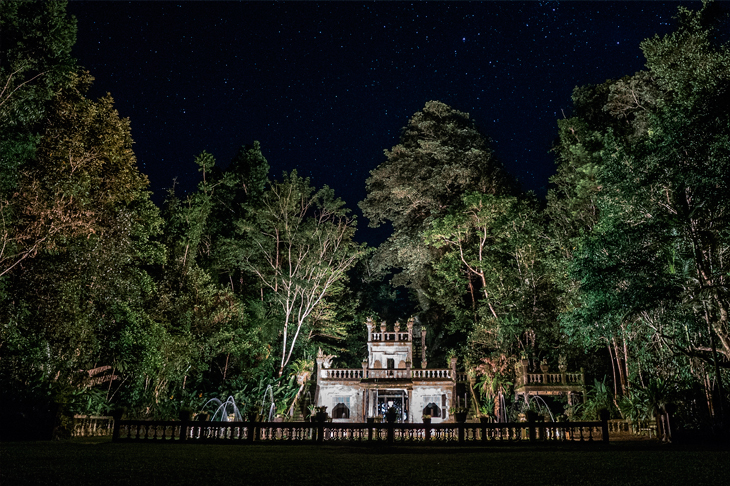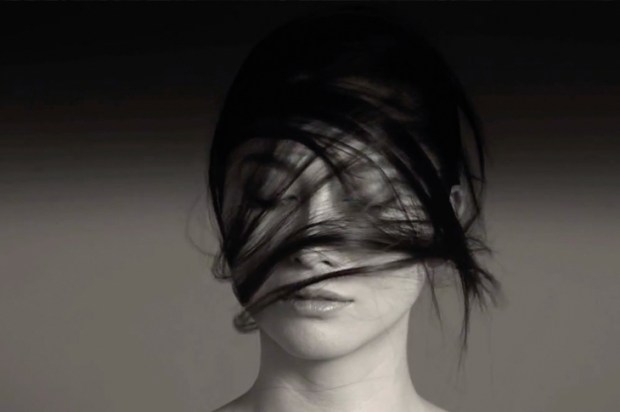The private island resort of Bedarra was once a byword for excess: champagne baths were not unheard of. But when current owners Sam and Kerri-Anne Charlton visited the island in 2011, months after the catastrophic Cyclone Yasi, they walked into what could have been a bomb site.
‘It was a little eerie – there were menus, bottles of wine strewn around. Trees felled, broken glass,’ remembers Sam Charlton, speaking from the bar, as guests sip martinis. He points upwards. ‘This building didn’t have a roof on it. The island was just flattened.’
Following the cyclone – where winds on nearby Mission Beach were estimated to have hit a staggering 285km/hour – only a madman or a fool would have taken on the task of reopening the resort. Yet Charlton, then in property funds management, saw an opportunity. There was another reason, too, for his interest: as an 11-year-old, the Queenslander had moved to the island with his brother and parents for 18 months, setting up home in a water-front fishing shack.
‘It had a basic solar system, electricity at times of the day when the sun was shining. There were beaches to explore, a little boat, kayaks. For half an hour each morning we did lessons over radio with a teacher based in Cairns,’ he recalls. ‘It was a magical place. It still is. That’s when I fell in love with it.’
To give their own children the same experience, the Charltons took a risk: they purchased the resort at a reduced rate. Today there are no more champagne baths. But with ten villas open, all with dramatic ocean views, Bedarra is thriving. And with Queensland hit by yet another cyclone this year – Cyclone Debbie, which caused more than $1bn in damage – it’s a reminder of the power of new beginnings.
Sonya Jeffrey, managing director of the Aboriginal-owned Ingan Tours located in the far north Queensland town of Tully, knows what that means. On the day of Cyclone Yasi she noticed seagulls flying inland. ‘When we see garam garam flying away from his natural environment, we know something is not right,’ she says.
That evening ‘I thought we were all going to die,’ says Jeffrey, 45, who identifies as a Jirrbal woman. The winds were howling, ferocious. ‘My neighbour was hanging onto the bottom of the toilet seat while the roof was ripped off,’ she says, shuddering. ‘We were leaning against the brick wall and I kid you not – the wall was like jelly. It was wobbling.’
The next day Jeffrey emerged blinking into the sunshine to see full-scale devastation of the usually lush tropical landscape, known for its banana plantations. ‘There was not a leaf left on the trees of either side of Tully. It was like a nuclear warhead had gone off.’
It took Ingan a year to get up and running again. With the bush tracks where Jeffrey usually led guided walks destroyed, the company was forced to set up kayaking trips instead. Six years later, they are their highest selling product. Meanwhile, the land, she insists, ‘has only just recovered – the trees are back and in full bloom.’
Forty minutes down the road, peaking out of the overgrown jungle above a pool where crocodiles lurk, sits a majestic castle.
In 1929 an eccentric Catalonian pastry chef, José Paronella, purchased thirteen acres of virgin scrub near Mena Creek for £120. He proceeded to build a fortress. There was a movie theatre, a dance hall (lit by a rotating mirrored ball, that scattered light like fairy dust), a teahouse, swimming pool, and tennis courts. A brand new hydro-electric plant supplied power.
For a time the park and pleasure gardens, open to the public, proved a great success, a favourite haunt for locals yearning for some European glamour. Its fortunes didn’t last long. In 1948 José perished of cancer. Fires and floods then devastated the castle over the years and three cyclones – Winifred in 1986, Larry in 2006, and Yasi in 2011 – pummelled what was left.
When owner Mark Evans came across Paronella Park with his wife Judy in 1993 ‘it was untidy, it was overgrown, the hydro plant wasn’t working,’ he says. He recognised that José Paronella had a vision, however: ‘When people said it can’t be done, that motivated him even more. The man that we’re talking about was not an engineer, not an architect, not a builder. He was a pastry chef. The crazy Spaniard he was called often.’
Wandering around the overgrown tennis courts – where huge fruit bats now circle – former Baptist minister Rod Bullpitt, 70, recalls being enchanted by Paronella Park as a child when it was in operation.
‘Then the floods came that wiped it out,’ he says, wistfully. ‘The whole place had been slowly decaying. It was with some sadness every time we came out it was not quite as good as last time. It was losing some of its original charm but it is becoming a different kind of charm: a ruin.’
Recognising the human yearning for nostalgia, Evans has turned destruction to his advantage: with 140,000 visitors a year – all eager to hear José’s story and soak up the romance of this gothic-like structure rearing out of the encroaching rainforest – the site is now one of Queensland’s most popular attractions.
Back in Bedarra, Charlton can sympathise with José Paronella’s struggle more than half a century ago. ‘There have been days where we’ve literally had blood, sweat and tears and we sit there and say, Jesus, is this all worth it?’ he says. Still, if there was another cyclone he knows what needs to be done. He shrugs and smiles: ‘We just fix it up and start again.’
Got something to add? Join the discussion and comment below.
Get 10 issues for just $10
Subscribe to The Spectator Australia today for the next 10 magazine issues, plus full online access, for just $10.
You might disagree with half of it, but you’ll enjoy reading all of it. Try your first month for free, then just $2 a week for the remainder of your first year.














Comments
Don't miss out
Join the conversation with other Spectator Australia readers. Subscribe to leave a comment.
SUBSCRIBEAlready a subscriber? Log in